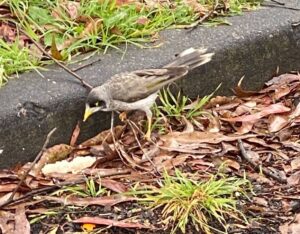The June issue of the Burke’s Backyard magazine contains an informative and useful zip out book – The Burke’s Backyard Guide to Backyard Birds. The book helps identify birds commonly found in Australian gardens and gives tips on how to attract them. This issue of the Burke’s Backyard magazine is on sale until 29 June at newsagents and leading supermarkets.
Australia is acknowledged as having a wonderful collection of native birds. If you go to some countries in the world, like Greece, you’ll hardly ever see one. If there aren’t any wild birds in your backyard, don’t worry – they are around, and they’re probably close by. You need to understand their requirements and perhaps make a few simple changes, and you can attract many species of native birds to your place in just a few years. There are three main groups of native birds:
Group One – Nectar feeding birds
Birds that only feed on nectar include Eastern Spinebills, New Holland honeyeaters, Brown honeyeaters, Silvereyes and Noisy miners. They love native plants like grevilleas, banksias, bottlebrushes, kangaroo paws and gum trees. Some exotic plants like camellias also provide winter food for birds such as the Eastern Spinebill. Rainbow Lorikeets have benefited enormously from people putting out nectar food for them (see recipe below), and also from the increased planting of nectar producing native species.
Group Two – Seed eaters
This group of birds includes King parrots, Galahs, Crested pigeons, Yellow-tailed black cockatoos, Crimson rosellas, Red-headed finches and Double-barred finches. They are easy to attract because you can just buy seed and put it out for them. Native plants like gum trees, casuarinas and banksias will attract seed eating birds. Some exotic species also make good food plants for them, for example the black cockies will eat seed cones on pine trees. If you have room in your backyard and want to attract finches and small parrots, it’s a good idea to allow some of your grass to go to seed.
Group Three – Insect eaters
The third group of birds that you can easily attract to your garden are insect feeding birds, for example Blue wrens and Eastern Yellow Robins. The most important thing to keep in mind with this group is not to use insecticides in your backyard.
Water
It is very important to provide your avian visitors with water. All varieties of birds love to bathe and drink frequently, so don’t forget to place several dishes of water around the garden for them.
Easy nectar mix
- 1 slice bread
- 1 tablespoon sugar
- 3/4 cup water
- 2 teaspoons of infant food (meal replacement and supplement)
Mix together the sugar, water and infant food. Place the bread in a shallow dish and pour mixture over. Put the food out when you hear the birds calling. Don’t leave it out for too long and discard leftovers, as fermented feed can make birds ill. To avoid the spread of disease, keep all feeding dishes scrupulously clean.



